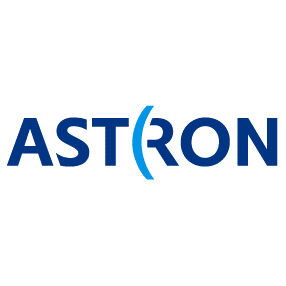Pulsar Animations
Pulsars are some of the most mind-boggling objects in our Universe, and they can be well made visible and audible in animations. Below are the products and source files for some such general-use pulsar animations. The same content is available in this github repository. All content is licensed as CC BY-SA: "Attribution-ShareAlike". This means you can (should!) use the animations and source files, as long as you credit us and license your new creations under the identical terms. So if you include an animation in a talk, use the accompanying credit line. If you put these animations on a web site, also include a link to the original.If you improve these animations, great! You will have to share alike, and we would welcome your
upload to the
github PSR-Anim repository. Contact Joeri van Leeuwen for more information.
Required software for playback and editing
The animations are provided in a number of formats, up to broadcast quality 1080p MP4s. The in-line movies below are 360p. They should be playable in modern presentation players, and included in e.g. Keynote and Powerpoint. Templates including embedded videos for such presentation software is also already available. In each source directory you can also find the HTML5 snippet needed to include the animation in your web page. Deep linking to the animation video files at astron.nl is fine. You can download files individually below, or as one big ZIP file.To work with the source files, you may need e.g. Autodesk Maya 2014, Adobe After Effects CC 2016, Blender, Cinema 4D, etc. Some are open source, for the others note that educational/student versions exist.
The basics: rotating pulsar
This is the basic pulsar animation. One clip holds 5 pulses and fits to a loop. The sound is B0329+54 at actual period.
Source files are Autodesk Maya scene setup, stills, and After Effects final scene. The products are MP4, AVI, GIFs. Credit Line: "Joeri van Leeuwen". License: CC-BY-AS.Pulsar with profile
This is an animation of a 1.3-second pulsar, including an accompanying pulse profile. The accompanying sounds were modified from recordings at Jodrell. Can loop.
Source files are the After Effects final scene and sound file. As input you will need the Autodesk Maya scene setup and stills from the Basic animation. The products are MP4, AVI, GIFs. Credit Line: "Joeri van Leeuwen". License: CC-BY-AS.John Rowe's Animations
Two galaxies, each containing a black hole at their centre, merge. The two back holes orbit one another at the centre of the merged galaxy, sending out gravitational waves as they perturb spacetime in their vicinity. These gravitational waves eventually reach our Galaxy, the Milky Way, where they modulate the signals from pulsars. The apparent pulsar period is alternately red-shifted and blue-shifted as the wave passes over the pulsar and the Earth.
John's older animations have been encoded to MP4 for easy inclusion in modern presentations:
The Crab Pulsar and Nebula
Animated here is a real-life Crab pulse-train taken with Westerbork, as it appears to originate from the pulsar in the center of the Nebula. It can loop seamlessly. The sound is a partly-running-averaged and re-modulated Westerbork detection of the Crab Pulsar.
Double Neutron Star J1906+0746
This is an animation of the geodetic precession in PSR J1906+0746. Two different version of this (without sound) are on youtube. One is similar to this one, the other is from the side, with labels, and more "story".
Source files are Autodesk Maya scene setup, and After Effects final scene. The products are MP4s. Credit Line: "Joeri van Leeuwen". License: CC-BY-AS.Normal, Young, and Millisecond Pulsars
These are three animations of ever faster pulsars, spinning at 1-Hz, 11-Hz, and 650-Hz pulsars.
The accompanying sounds were modified from recordings at WSRT, Parkes and Jodrell on B0329+54, Vela and B1937+21. They can loop seamlessly.




